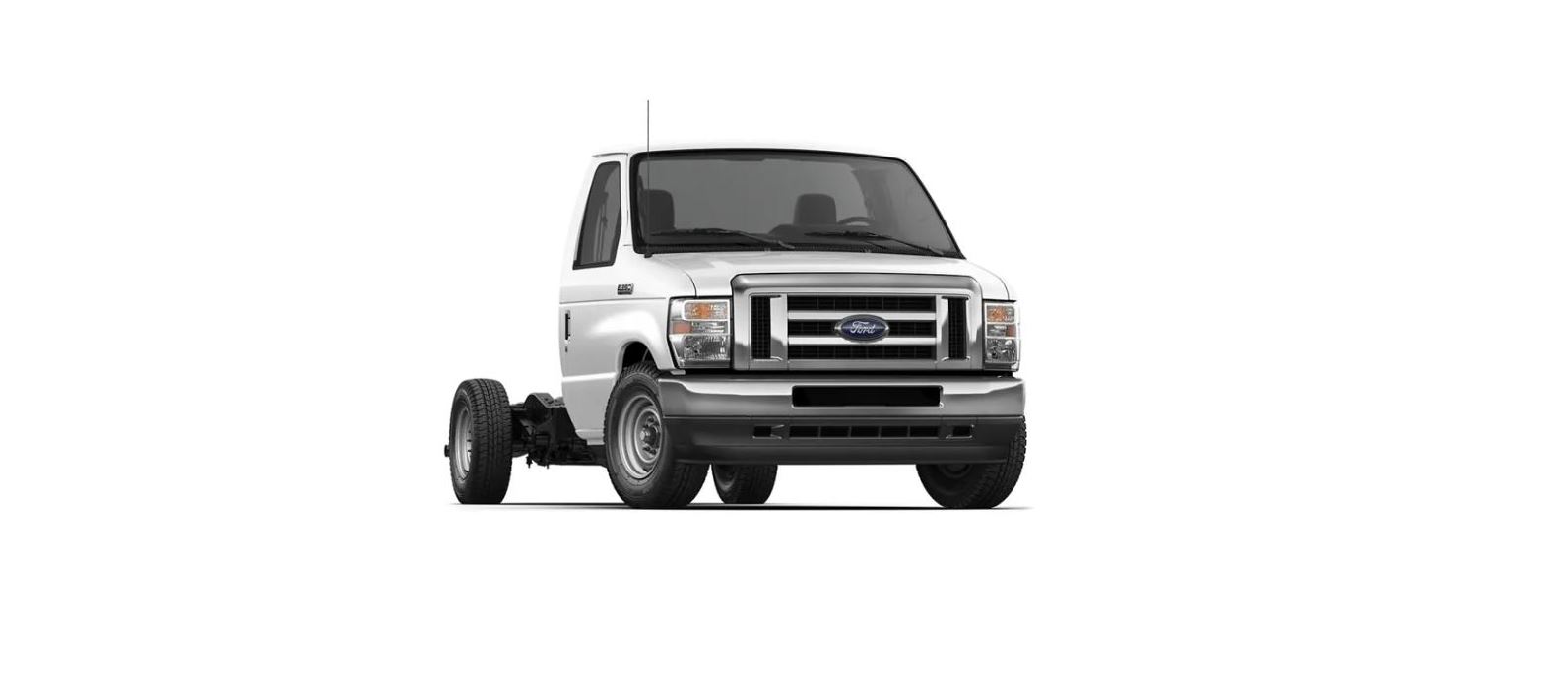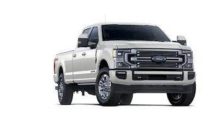2023 Ford E350-Series Using Adaptive Cruise Control User Manual




2023 Ford E350-Series Using Adaptive Cruise Control


Using Adaptive Cruise Control
WARNING: You are responsible for controlling your vehicle at all times. The system is designed to be an aid and does not relieve you of your responsibility to drive with due care and attention. Failure to follow this instruction could result in the loss of control of your vehicle, personal injury or death.
- WARNING: Do not use adaptive cruise control on winding roads, in heavy traffic or when the road surface is slippery. This could result in loss of vehicle control, serious injury or death. ging road conditions such as entering or leaving a highway, on roads with intersections or roundabouts, roads without visible lanes of travel, roads that are unpaved, or steep slopes. Failure to follow this instruction could result in the loss of control of your vehicle, personal injury or death.
- WARNING: Do not use the system in poor visibility, for example, fog, heavy rain, spray or snow.
- WARNING: Do not use the system when towing a trailer that has aftermarket electronic trailer brake controls. Failure to follow this instruction could result in the loss of control of your vehicle, personal injury or death.
- WARNING: Do not use tire sizes other than those recommended because this can affect the normal operation of the system. Failure to do so may result in a loss of vehicle control, which could result in serious injury.
- WARNING: The system may not detect stationary or slow-moving vehicles below 6 mph (10 km/h).
- WARNING: The system does not detect pedestrians or objects in the road.
- WARNING: The system does not detect oncoming vehicles in the same lane.
- WARNING: The system is not a crash warning or avoidance system.
- WARNING: Do not use the system with a snowplow blade installed.
The system adjusts your vehicle speed to maintain the set gap between you and the vehicle in front of you in the same lane. You can select four gap settings.
The system uses a radar sensor that projects a beam directly in front of your vehicle.
The adaptive cruise controls are on the steering wheel.
Switching Adaptive Cruise Control On
Setting the Adaptive Cruise Speed
Drive to your preferred speed.
Take your foot off the accelerator pedal.
The indicator, current gap setting, and set speed appear in the information display.
A vehicle graphic illuminates if there is a vehicle detected in front of you.
Note: When adaptive cruise control is active, the speedometer may vary slightly from the set speed displayed in the information display.
Following a Vehicle
WARNING: When following a vehicle that is braking, your vehicle does not always decelerate quickly enough to avoid a crash without driver intervention.
Apply the brakes when necessary. Failure to follow this instruction could result in personal injury or death.
WARNING: The system only warns of vehicles detected by the radar sensor. In some cases there may be no warning or a delayed warning. Apply the brakes when necessary. Failure to follow this instruction could result in personal injury or death.
- Note: When you are following a vehicle and you switch on a direction indicator, adaptive cruise control may provide a small temporary acceleration to help you pass.
- Note: The brakes may emit noise when applied by the system.
When a vehicle ahead of you enters the same lane or a slower vehicle is ahead in the same lane, the vehicle speed adjusts to maintain a preset gap distance. A vehicle graphic illuminates in the instrument cluster.
Your vehicle maintains a consistent gap from the vehicle ahead until any of the following occur:
- The vehicle in front of you accelerates to a speed above the set speed.
- The vehicle in front of you moves out of the lane you are in.
- Your vehicle speed falls below 12 mph (20 km/h).
- You set a new gap distance.
The system applies the brakes to slow your vehicle to maintain a safe gap distance from the vehicle in front. The system only applies limited braking. You can override the system by applying the brakes.
If the system determines that its maximum braking level is not sufficient, an audible warning sounds, a message appears in the information display and an indicator flashes when the system continues to brake. Take immediate action.
Setting the Gap Distance
You can decrease or increase the distance between your vehicle and the vehicle in front by pressing the gap control.
Press and release to decrease the gap distance.
The selected gap appears in the information display as shown by the bars in the image.
- Note: The gap setting is time dependent and therefore the distance adjusts with your vehicle speed.
Note: It is your responsibility to select a gap appropriate to the driving conditions.
Adaptive Cruise Control Gap Settings
Each time you switch the system on, it selects the last chosen gap setting.
Overriding the Set Speed
WARNING: If you override the system by pressing the accelerator pedal, it does not automatically apply the brakes to maintain a gap from any vehicle ahead.
When you press the accelerator pedal, you override the set speed and gap distance.
When you override the system, the green indicator light illuminates and the vehicle image does not appear in the information display.
The system tunes the engine, transmission controls and the stability and traction control modes to normal mode. The vehicle speed decreases to the set speed, or a lower speed if following a slower vehicle.
Changing the Set Speed
Press and hold either button to change the set speed in large increments. Release the button when the set speed has reached the desired speed.
The system may apply the brakes to slow the vehicle to the new set speed. The set speed displays continuously in the information display when the system is active.
Canceling the Set Speed
The set speed does not erase.
Resuming the Set Speed
Your vehicle speed returns to the previously set speed and gap setting. The set speed displays continuously in the information display when the system is active.
Note: Only use resume if you are aware of the set speed and intend to return to it.
Automatic Cancellation
The system is not functional at vehicle speeds below 12 mph (20 km/h). An audible alarm sounds and the automatic braking releases if the vehicle drops below this speed.
Automatic cancellation can occur when the tires lose traction or you apply the parking brake.
Hilly Condition and Trailer Tow Usage
You should select a lower gear when the system is active in situations such as prolonged downhill driving on steep grades, for example in mountainous areas.
The system needs additional engine braking in these situations to reduce the load on the vehicle’s regular brake system to prevent it from overheating.
- Note: An audible alarm sounds and the system shuts down if it applies the brakes for an extended period of time. This allows the brakes to cool. The system functions normally again after the brakes cool.
- Note: When towing with adaptive cruise control, switch on Tow/Haul Mode.
Switching Adaptive Cruise Control Off
Note: The set speed and gap setting is erased when you switch the system off.
Detection Issues
- WARNING: On rare occasions, detection issues can occur due to the road infrastructures, for example bridges, tunnels and safety barriers. In these cases, the system may brake late or unexpectedly. At all times, you are responsible for controlling your vehicle, supervising the system and intervening, if required.
- WARNING: If the system malfunctions, have your vehicle checked as soon as possible.
The radar sensor has a limited field of view. It may not detect vehicles at all or detect a vehicle later than expected in some situations. The lead vehicle graphic does not illuminate if the system does not detect a vehicle in front of you.
Detection issues can occur:
A. When driving on a different line than the vehicle in front.
B. With vehicles that edge into your lane. The system can only detect these vehicles once they move fully into your lane.
C. There may be issues with the detection of vehicles in front when driving into and coming out of a bend or curve in the road.
In these cases, the system may brake late or unexpectedly. You should stay alert and take action when necessary.
If something hits the front end of your vehicle or damage occurs, the radar-sensing zone may change. This could cause missed or false vehicle detection.
Optimal system performance requires a clear view of the road by the windshield-mounted camera. Optimal performance may not occur if:
- The camera is blocked.
- There is poor visibility or lighting conditions.
- There are bad weather conditions.
System Not Available
Conditions that can cause the system to deactivate or prevent the system from activating when requested include:
- A blocked sensor.
- High brake temperature.
- A failure in the system or a related system.
Blocked Sensor
The camera is mounted on the windshield behind the interior mirror.
A message displays if something obstructs the radar signals from the sensor. The sensor is in the lower grille. The system cannot detect a vehicle ahead and does not function when something blocks the sensor.
Note: You cannot see the sensor. It is behind a fascia panel.
Keep the front of your vehicle free of dirt, metal badges or objects. Vehicle front protectors and aftermarket lights may also block the sensor.
Possible causes and actions for the blocked sensor message displaying:
Due to the nature of radar technology, it is possible to get a blockage warning with no actual block. A false blocked condition either self-clears or clears after you restart your vehicle.
Switching to Normal Cruise Control
WARNING: Normal cruise control will not brake when your vehicle is approaching slower vehicles. Always be aware of which mode you have selected and apply the brakes when necessary.
Automatic braking remains active to maintain set speed.
You can change from adaptive cruise control to normal cruise control through the information display.
Recent Posts
VW Jetta Engine Fuse Box Diagram
Access the comprehensive 2010-2018 VW Jetta Passenger Fuse Box Diagram to troubleshoot electrical issues effectively.…
VW Jetta Passenger Fuse Box Diagram
Explore the comprehensive VW Jetta Passenger Fuse Box Diagram to troubleshoot electrical issues effectively. Understand…
2023 Ford F-150 Lightning Fuse Box Diagram
Under Hood Fuse Box Location Remove the front luggage compartment cover. Under Hood Fuse Box…
2022 Kawasaki NINJA H2 SX SE Brake Lever Adjuster Owner’s Manual
2022 Kawasaki NINJA H2 SX SE Brake Lever Adjuster Owner's Manual NOTICE Only adjust the front…
2023 Land Rover Range Rover Evoque Exiting The Vehicle Owners Manual
2023 Land Rover Range Rover Evoque Exiting The Vehicle SINGLE LOCKING WARNING Before exiting the…
2023 Land Rover Range Rover Evoque Front Seats Owners Manual
2023 Land Rover Range Rover Evoque Front Seats FRONT SEAT SAFETY Make sure to read…


